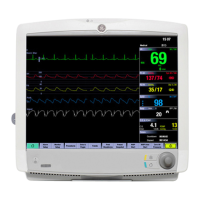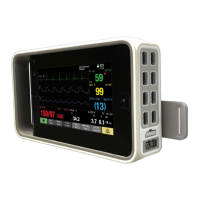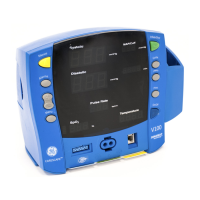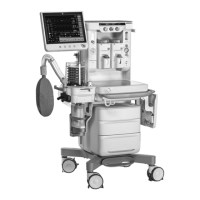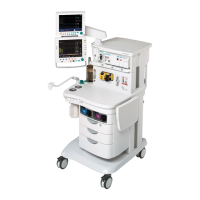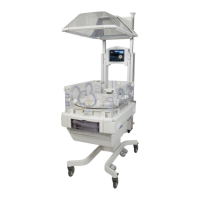Hardware installation
57
2106778-001
The secondary display
The secondary display must be a digital display. It can be either an USB or serial touchscreen,
or a non-touchscreen display. You cannot connect a cloned display to DVI-D 2 connector.
1. Connect one end of the video cable to the DVI-D 2 connector in the rear of the patient
monitor. Connect the other end of the video cable to the display.
2. If applicable, connect a USB or serial touchscreen cable to the USB 2 or RS-232 2
connector in the rear of the patient monitor. Connect the other end of the touchscreen
cable to the display.
The third display
The optional third display can only be used to support the iPanel application. The patient
monitor must be equipped with an optional third video card.
The third display can be either an analog or digital display. It can be either an USB touchscreen,
or a non-touchscreen display.
You may optionally connect a cloned analog display to the DVI-I 3 port. Use a DVI-I to DVI-D
and VGA splitter to do so. The patient monitor does not support touchscreen interface for the
cloned third display.
1. Connect one end of the video cable to the DVI-I 3 connector in the rear of the patient
monitor. Connect the other end of the video cable to the display.
2. If applicable, connect a USB touchscreen cable to the USB 3 connector in the rear of the
patient monitor. Connect the other end of the USB touchscreen cable to the display.
6.3.2 Connecting remote displays
NOTE: The instructions in this chapter applies to D19KT VER01 displays.
Display port 1 Display Touchscreen interface
port
DVI-I 1
Display 1 USB1 or RS-232 1
Display 1 cloned USB1 or RS-232 1
Display port 2 Display Touchscreen interface
port
DVI-D 2
Display 2 USB2 or RS-232 2
Display port 3 Display Touchscreen interface
port
DVI-I 3
Display 3 USB3
Display 3 cloned No touchscreen interface
available
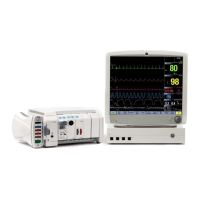
